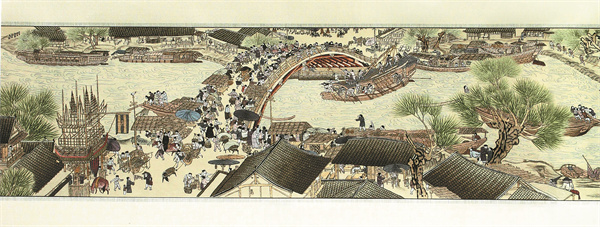

Bian embroidery, also known as Song embroidery, is one of the five well-known Chinese embroideries and on a par with its Su (Suzhou), Xiang (Hunan), Shu (Sichuan) and Yue (Guangdong) counterparts.
It boasts a long history stretching back more than 800 years.
Hundreds of outstanding women practitioners of the art once gathered at Wenxiuyuan, an institute of embroidery, which dates back to the Northern Song Dynasty (960-1127).At the time, Kaifeng was called Bianjing and was the dynastic capital, as depicted in Dongjing Meng Hua Lu (Dreams of Splendor of the Eastern Capital) written by Meng Yuanlao of the Southern Song Dynasty (1127-1279).
Those women embroidered elegant robes, uniforms, hats and boots for emperors, princesses, dignitaries and nobles, so the embroidery was associated with the imperial court or official roles.
The embroidery art has its own unique strength of being able to express the same aesthetics as traditional painting. Multiple threads and needlework can be applied to bring to life the image of even a small flower.
The establishment of the embroidery institute in ancient China enabled many skilled embroiderers from different regions to learn and exchange techniques, which led to the greater development of Bian embroidery.
During the reign of Emperor Huizong of the Song Dynasty, who was known as a weak ruler but an excellent artist, the institute established a department that specialized in the artistic creation of landscapes, buildings, figures, flowers and birds in Bian works. Corresponding production, training and management systems also took shape, bringing Bian embroidery to maturity.